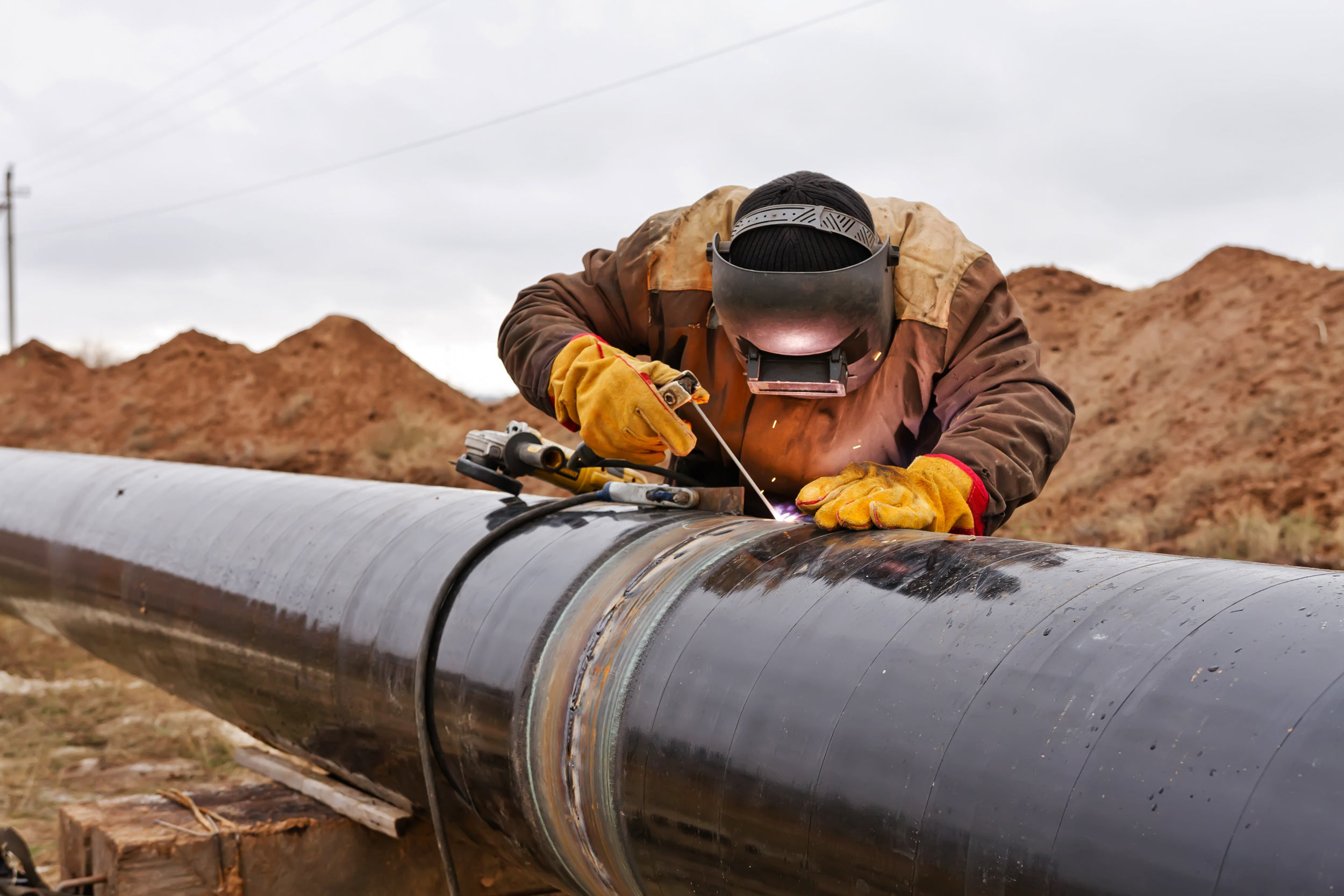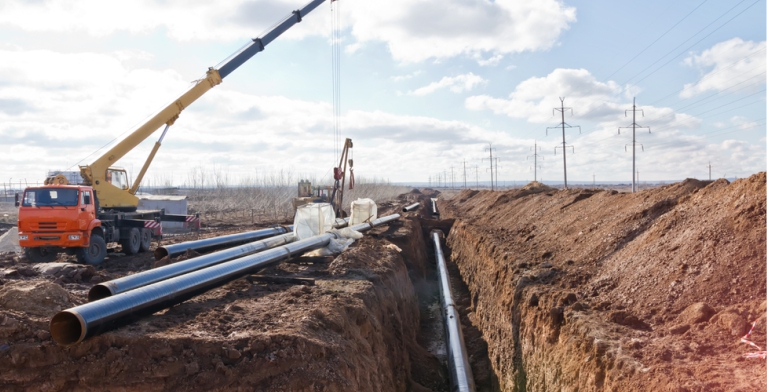What’s Needed for Professional Work With Creek Pipe Texas oilfield
The Value of Pipeline Construction: Discovering the Providers Supplied in the Industry
Pipeline construction is a critical component of modern infrastructure. It facilitates the transport of important resources like oil, gas, and water. The industry encompasses various solutions, consisting of planning, website preparation, and setup. Each phase needs precision and adherence to safety criteria. As areas rely on these systems for their incomes, comprehending the details of pipeline construction exposes its value and potential obstacles. What factors affect the success of these projects?
Introduction of Pipeline Construction Providers
Pipeline construction solutions incorporate a variety of customized activities made to facilitate the setup of pipes for transporting various compounds, consisting of oil, gas, and water. These services typically consist of website preparation, excavation, installment of pipeline segments, and backfilling. Proficient labor and advanced equipment are essential for guaranteeing each stage is implemented with precision and safety.Safety protocols are paramount, as these jobs frequently entail working with dangerous products and in difficult settings. Quality control steps ascertain that the pipes satisfy sector criteria and laws. Furthermore, the services may include trenchless innovation, which reduces surface disruption.Environmental factors to consider play a significant function in pipe construction, calling for evaluations and mitigations to secure surrounding ecosystems. Generally, pipe construction services are important for establishing the infrastructure necessary for energy and water distribution, sustaining both financial development and societal demands.
Planning and Layout in Pipeline Projects
Effective planning and layout are vital components of effective pipeline projects, making sure that all aspects are thoroughly dealt with before construction starts. This phase includes detailed feasibility research studies that assess the technological, economic, and environmental aspects affecting the project. Engineers and designers collaborate to produce detailed plans that lay out the pipeline course, products, and construction techniques, straightening with regulative demands and market standards.Advanced software application and modeling strategies are typically used to simulate various scenarios, optimizing the style for performance and security. Environmental impact assessments are performed to alleviate potential harm to environments and communities, mirroring a dedication to sustainable methods. Furthermore, stakeholder interaction is essential, fostering interaction and dealing with concerns from impacted celebrations. Ultimately, effective planning and style established the structure for a pipeline task, minimizing dangers and guaranteeing a streamlined construction procedure, ultimately adding to the overall success of the operation.
Website Preparation and Excavation
Extensive website prep work and excavation are vital action in the pipeline construction procedure. This stage involves a comprehensive evaluation of the land where the pipe will certainly be mounted. Project groups carry out surveys to determine dirt types, topography, and existing energy lines to guarantee a risk-free and effective excavation. Appropriate site prep work decreases ecological impact and helps with smoother construction operations.Excavation adheres to, where hefty equipment is utilized to get rid of dirt and rock, producing a trench that satisfies the defined deepness and width for the pipeline. This process needs to stick to security policies and environmental standards to stop damages to bordering ecosystems.Additionally, erosion control measures are implemented to stabilize the site during and after excavation. Reliable site preparation and excavation add substantially to the general success of pipeline tasks, laying a strong structure for the subsequent stages of construction.
Pipeline Installation Strategies
Pipeline installation techniques are important for the effective execution of framework jobs. Two noticeable methods include trenchless innovation, which reduces surface area interruption, and the open-cut excavation procedure, known for its simple technique. Each method offers distinct advantages and considerations relying on project needs and environmental factors.
Trenchless Technology Methods
While standard approaches of pipe installation frequently entail extensive excavation, trenchless innovation methods supply an extra reliable and ecologically friendly choice. These cutting-edge techniques, such as horizontal directional exploration and pipe bursting, minimize surface disruption by enabling the setup of pipes without extensive digging. This not just minimizes the environmental impact yet also significantly reduces labor and repair costs. Trenchless techniques assist in the installment of pipelines in metropolitan areas where standard excavation would be impractical or destructive to existing facilities. In addition, these techniques can fit different soil kinds and conditions, making them flexible remedies for pipeline construction. Eventually, trenchless innovation stands for a considerable improvement in the pipe market, advertising sustainability and operational efficiency.

Open-Cut Excavation Process
Open-cut excavation continues to be a fundamental technique in pipe installment, identified by the direct excavation of a trench to lay pipelines. This approach entails removing soil and various other materials to develop a trench of sufficient deepness and size, permitting the positioning of pipes at the needed grade. Open-cut excavation is frequently liked for its cost-effectiveness and simpleness, particularly in areas with stable soil conditions. It can interrupt surface activities and calls for mindful preparation to take care of traffic and ecological influences. Precaution have to be implemented to safeguard employees and neighboring facilities during the excavation procedure. In general, while open-cut excavation might not be ideal for all surfaces, it remains a commonly utilized approach in pipeline construction.
Testing and Quality Control
Checking and top quality assurance are crucial elements in pipeline construction, making sure that installations meet well-known safety and security criteria and performance needs. Different assessment strategies and methods are employed to assess material quality and adherence to regulative compliance. This systematic approach aids determine potential problems prior to they escalate, securing the stability click for more of the pipe system.

Examination Techniques and Methods
Assessment strategies and techniques are important parts in making certain the stability and security of pipeline construction. Various approaches, including aesthetic assessments, ultrasonic screening, and radiographic evaluations, are utilized to identify flaws and verify top quality. Visual evaluations enable the recognition of surface anomalies, while ultrasonic testing utilizes acoustic waves to analyze wall surface thickness and situate defects internally. Radiographic assessments involve X-rays or gamma rays to generate photos of the pipe's framework, disclosing surprise concerns. In addition, pressure testing is carried out to examine the pipeline's honesty under functional conditions. These approaches collectively add to a detailed understanding of the pipeline's problem, making it possible for timely maintenance choices and making certain compliance with industry standards. Effective evaluation is important for protecting against failures and promoting long-lasting operational security.
Safety Standards Compliance
Making certain conformity with safety standards is extremely important in pipeline construction, as it directly influences the project's general quality and integrity. Abiding by recognized policies and standards warranties that construction techniques reduce threats related to pipeline installation and procedure. Creek Pipe Company. Extensive screening procedures, including non-destructive testing and pressure assessments, are important in verifying that pipes can hold up against the functional tensions they will encounter. Quality guarantee actions are likewise necessary, as they establish a framework for regular monitoring and assessment throughout the construction process. By prioritizing safety requirements conformity, companies not only shield workers and the atmosphere yet also enhance the stability of the pipe, inevitably leading to long-term functional success and public rely on the infrastructure
Material Quality Analysis
Material quality assessment plays a considerable duty in the overall stability of pipeline construction. This procedure includes extensive screening and top quality guarantee steps to guarantee that materials fulfill sector requirements and specifications. Different tests, including tensile toughness, rust resistance, and weld integrity analyses, are conducted to identify any possible weaknesses. A detailed assessment not only assures the efficiency of the pipe however also boosts safety and security and toughness over its life-span. Additionally, carrying out quality assurance methods assists mitigate dangers connected with product failures, which can lead to pricey repairs and environmental threats. By prioritizing worldly high quality evaluation, firms can guarantee compliance with governing needs while cultivating self-confidence among stakeholders in the reliability of their pipe systems.
Maintenance and Repair Providers
Maintenance and repair services play a necessary duty in the long life and performance of pipeline systems. These services incorporate routine examinations, troubleshooting, and restorative activities to attend to wear and tear, leaks, and various other issues that may occur gradually. Proficient specialists make use of sophisticated innovations such as ultrasonic screening and wise pigging to keep an eye on pipe honesty, making sure that any type of potential problems are news determined early.Additionally, maintenance programs frequently include scheduled precautionary procedures created to boost system reliability and lower the probability of unexpected failings. Repair services might entail the replacement of broken sections, sealing leaks, or using trenchless innovation for very little disturbance.
Environmental Compliance and Safety And Security Procedures
Pipeline systems not only require recurring maintenance and fixing to work successfully yet likewise need to abide by strict ecological conformity and precaution. These laws are necessary for minimizing environmental influence and making sure public security. Companies in the pipe construction industry apply comprehensive ecological assessments before job initiation, determining potential risks to wildlife and ecosystems.Furthermore, adherence to security protocols shields employees and surrounding areas. This includes regular training on emergency situation response and spill avoidance techniques.To maintain conformity, markets use checking innovations to find leaks and various other anomalies in real-time. Environmental monitoring plans are usually developed to lay out actions for resolving unpredicted problems throughout construction.Ultimately, strict adherence to ecological compliance and precaution not just satisfies lawful responsibilities but likewise fosters sustainable practices within the market, promoting a balance between facilities development and environmental stewardship.
Frequently Asked Questions
What Occupation Opportunities Are Readily Available in Pipeline Construction?
Job opportunities in pipe construction include duties such as project supervisors, designers, welders, and safety and security assessors. These settings require varied abilities, offering paths for development in an essential sector of facilities growth and power circulation.

Just How Do Pipeline Projects Impact Local Communities?
Pipeline jobs significantly affect regional neighborhoods by affecting financial growth, offering job opportunities, and enhancing facilities. They may also raise concerns concerning ecological impacts, land use, and prospective disturbances to area communication and natural ecosystems.
What Modern technology Is Utilized in Modern Pipeline Construction?
Modern pipeline construction makes use of sophisticated over at this website modern technologies such as GIS for mapping, drones for aerial surveys, and automated welding systems to improve efficiency, security, and precision, inevitably assisting in the effective transportation of sources across various terrains. Creek Pipe contact.
Just How Are Pipeline Construction Expenses Estimated?
Pipeline construction prices are approximated through detailed analyses of materials, labor, devices, and regulative needs. Variables like terrain, job dimension, and environmental considerations also substantially influence the total spending plan and economic preparation for construction.
What Are the Most Significant Obstacles in Pipeline Construction Projects?
The biggest challenges in pipe construction tasks include regulatory conformity, environmental issues, logistical issues, protecting funding, and handling labor lacks. Each aspect can greatly influence timelines and budgets, complicating the overall implementation of the project.